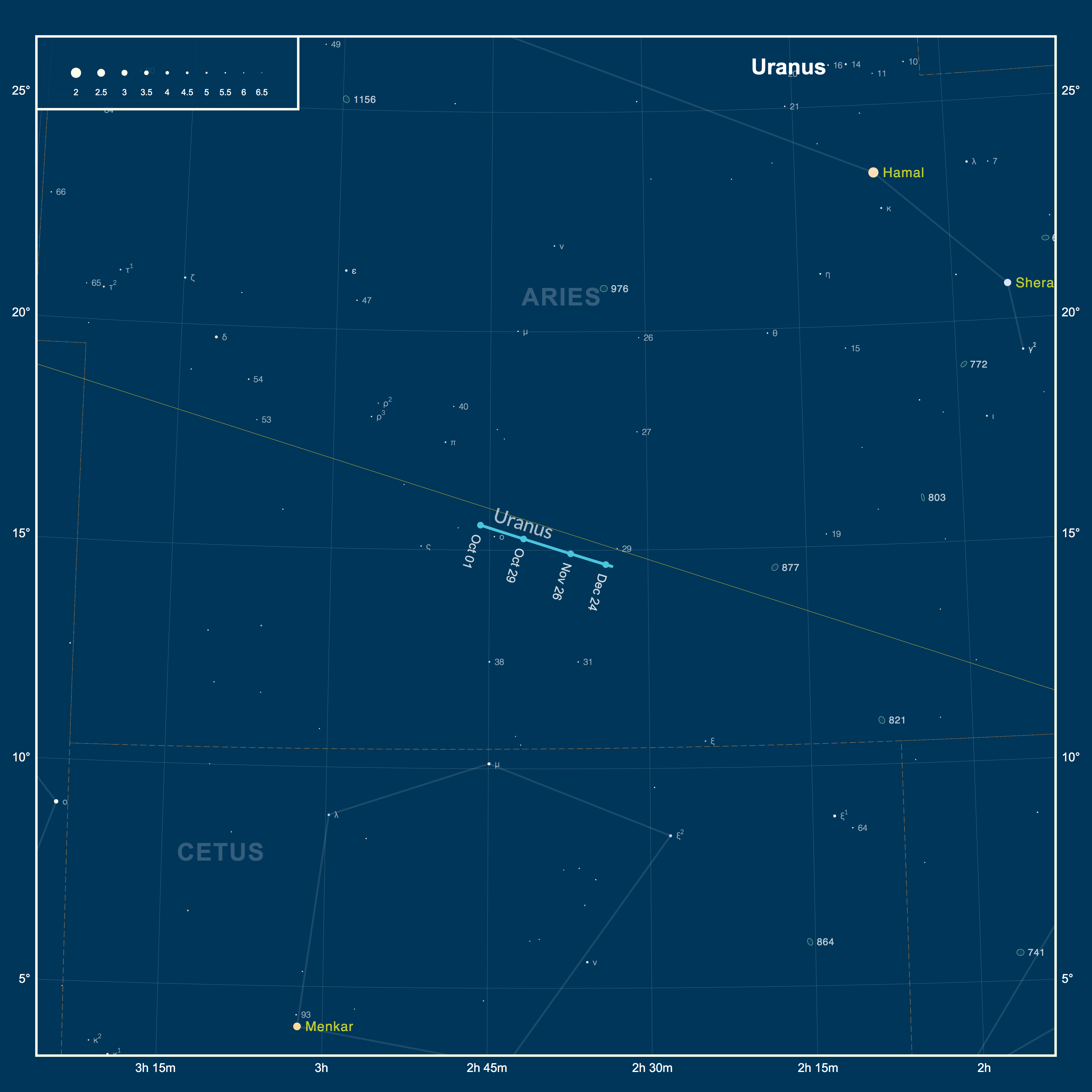Skylights: October 2021
October 2021 :
Note: This article may contain outdated information
This article was published in the October 2021 issue of The Skyscraper and likely contains some information that was pertinent only for that month. It is being provided here for historical reference only.
October is a month that brings notable seasonal change. Not only are the leaves changing color, but the nights are getting substantially longer and cooler. Beginning October 17th, sunrises will occur after 7am, and the following day, sunsets will occur before 6pm.
We will soon have our first frost, and the night singing insects will soon be silent. Perhaps a single, slow-chirping katydid in a distant tree or a lone cricket hanging on the last patch of warm grass holds back the natural silence that comes with the season.
The stars of summer are now distinctly in the western half of the sky. Our familiar Big Dipper is resting low in the northwest, and Fomalhaut now resides in the southern sky.
Mercury passes inferior conjunction on October 10 and returns to the morning sky for one of the more favorable apparitions of the year, reaching a maximum western elongation of 18° on the 25th. The steep angle of the ecliptic with respect to the horizon should allow for spotting Mercury’s crescent phase about mid-month. .
Venus continues its southward march above the southwestern horizon, passing 1.5° north of Antares on the 16th, and reaching its greatest elongation of 47° east of the Sun on the 27th. On this date, Venus will appear as a 50% quarter phase, and will appear as an enlarging crescent thereafter. The waxing crescent Moon will make a striking pairing with Venus on the 9th.
Mars reaches conjunction on October 8. Mars is the only planet for which the interval between successive conjunctions, known as its synodic period, is greater than two Earth years, significantly longer than any other planet. As such, cycles of Mars persist over multiple cycles of any other planet. Since the last conjunction of Mars in September 2019, three spacecraft were launched towards and arrived at the red planet. Mars will reappear in the morning sky by the end of the year, on its way to a December 2022 opposition in Taurus.
Jupiter and Saturn rule the early evening sky in Capricornus, but notice how by midnight, they’re becoming low in the southwest. The waxing gibbous Moon passes below Saturn and Jupiter on the 13th, 14th and 15th.
1The Full Hunter’s Moon occurs on October 20, with moonrise at 7:13pm.
The month’s planetary focus is Uranus. Although it doesn’t come to opposition until the first week of November, now is a good time to begin tracking it in the evening sky, and even try an observing challenge.
Spotting the teal-hued ice giant is fairly easy, and the best tool for locating Uranus is binoculars--a 50mm pair works best. Start the journey by drawing an imaginary line between Hamal (Alpha Arietis) to Menkar (Alpha Ceti). From the midpoint of this line, move east (left), towards the Pleiades, by about 4 Moon diameters (2°). Here, you should be centered on a slightly asymmetric zig-zag asterism consisting of five 5th and 6th magnitude stars. The five stars are, from east to west, Pi, Sigma, Omicron, 31, and 38 Arietis. It may resemble a pattern similar to the W asterism of Cassiopeia, with the open ends of the W pointing back towards Hamal. Now look at the center star of the W, Omicron Arietis, and you may find a similarly bright object a little to the west of this star. This is Uranus, 18.7 AU away.
Familiarize yourself with the stars in this field of view, and come back to it on subsequent nights to note how Uranus moves among them. Try to find a dark sky and observe on a moonless night. Remove the binoculars and try to see if you can spot it without optical aid. Uranus is just bright enough, at magnitude 5.7, to be visible under ideal conditions. It also helps to wait until Uranus is highest in the sky, around 1:00am.
Another aid to locating Uranus, the just past Full Moon is just 2° south of Uranus on the 21st.
Finally, don’t forget to continue watching the minor planets Pallas and Ceres. Pallas is in Aquarius, only a few degrees from Neptune, and Ceres begins moving retrograde just a few degrees southeast of Aldebaran.




